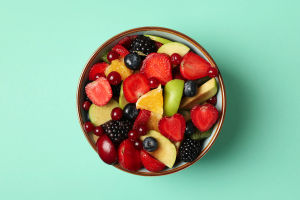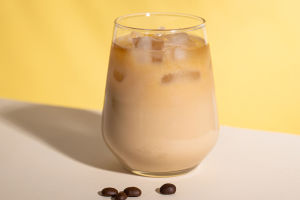Matcha drinks have gained more and more attention around the world in recent years, especially as healthy diets and lifestyles are becoming more and more important.
Originating from China, matcha has evolved over centuries and is now an important part of the Japanese tea ceremony. Its unique flavor and rich nutrients make it a special place in tea drinks.
The biggest difference between matcha and ordinary green tea is how it is prepared and presented. Matcha is made by grinding whole tea leaves into a fine powder, so when drinking it, you can not only the aroma of tea but also the nutrients in the tea.
This preparation method makes matcha higher in antioxidants, especially catechins, a compound that helps with anti-aging and promotes metabolism. In addition, matcha is rich in vitamins, minerals, and amino acids such as L-theanine, which helps relax nerves and improves concentration.
There are many types of matcha drinks to meet the needs and tastes of different people. Classic matcha drinks include matcha latte, matcha smoothie, matcha milkshake, etc. Matcha latte is made by mixing matcha powder with milk or plant milk to create a silky taste.
By adjusting the proportion of milk, you can make matcha lattes of different strengths to meet the taste preferences of different consumers. Matcha smoothies add ice cubes and sweeteners to matcha, which is suitable for hot summer and brings a refreshing enjoyment.
In matcha drinks, the blending of sweetness is also crucial. Many people choose to add honey, maple syrup, or syrup to balance the bitterness of matcha. It is worth noting that the selection of these sweeteners should take into account health factors and avoid using too much sugar to maintain the healthy attributes of the drink.
With the popularity of matcha, a variety of convenient matcha powders and ready-to-drink matcha drinks have appeared on the market, which is convenient for consumers to enjoy quickly at home or on the go.
In addition to deliciousness, the health benefits of matcha drinks are also an important factor that attracts many consumers. Studies have shown that matcha can help increase metabolic rate, promote fat oxidation, and help lose weight.
In addition, the caffeine content in matcha is moderate, and compared with coffee, it can provide more lasting energy without causing the anxiety caused by caffeine. This makes matcha the preferred drink for many people who pursue a healthy life.
The preparation process of matcha is not only the making of a drink but also a cultural experience. In Japan, the tea ceremony is a highly ritualistic activity, and the brewing and drinking of matcha embodies the concept of tranquility and harmony.
Even in modern times, many people are willing to relax and enjoy the beauty of life in this way. Brewing matcha, observing its color changes, feeling the fragrance, and even tasting the delicate taste are all spiritual enjoyments.
Globally, the popularity of matcha has also promoted the development of related products. Many restaurants and cafes have begun to launch matcha-related desserts, such as matcha cakes, matcha ice cream, etc., further enriching the way to eat matcha.
These innovative combinations not only retain the original flavor of matcha but also bring consumers a new taste experience. At the same time, the diversified application of matcha has also promoted the participation of more consumers and stimulated people's interest in matcha.
Matcha drinks have won wide popularity for their unique flavor and rich health benefits. With people's emphasis on healthy diet and lifestyle, the market prospects of matcha are still broad. Whether as a drink or as a manifestation of culture, matcha is constantly affecting people's lifestyles.
In the future, matcha is expected to continue to be integrated into more food and drinks and become one of the representatives of a healthy diet. Whether it is a leisurely afternoon or a busy break at work, enjoying a cup of matcha drink is a rare enjoyment.


